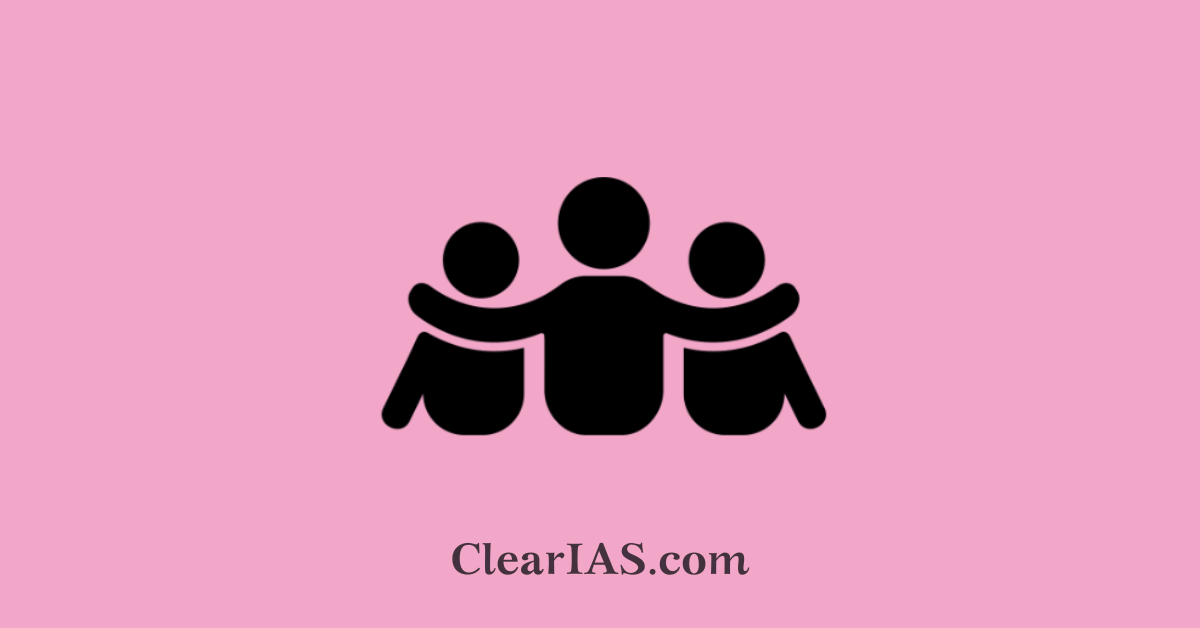
Self Help Groups (SHG) play a significant role in the development process of countries like India.
The Government (or state) alone cannot bring development.
The development process in India has many actors. Along with the Government, Non-Governmental Organisations (NGOs) and Self Help Groups (SHGs) also play a significant role in the development industry.
What are Self Help Groups (SHGs)?
Self Help Groups are groups of 10-20 people in a locality formed for any social or economic purpose. Most of the SHGs are formed for the purpose of better financial security among its members. SHGs can exist with or without registration.
Self Help Groups and Their Origin
- Indian Microfinance Model.
- Introduced in 1992 – under the guidelines by NABARD and RBI.
- All problems cannot be solved alone.
- SHG is a form of enterprise. They perform the role of collective banks. They mobilize savings from the members and performs both debit and credit functions.
- For external credit, SHG links with the banks ie. SHG-Bank linkages.
- Now SHGs also links with companies ie. SHG-Corporate linkages.
- For Women SHGs, Government is providing interest subvention scheme.
- Importance of SHGs – Increased incomes of the poor through collective performance.
Statistics of SHGs in India
- About 1 crore SHGs with active bank linkages in India.
- Involvement of 10 crore people of India.
- The aggregate bank balance of about Rs.7000 crores.
- 90% of SHGs in India consist exclusively of women.
SHG-Bank Linkage Program in India

SHGs in India often work in association with Banks (SHG – Bank Linkage Programme). The same is the basis of Indian Microfinance Model too.
SHG – Bank Linkage was started in India in 1992 under the guidelines of NABARD and Reserve Bank of India.
Role of Self Help Groups
- Income generation for the poor.
- Access to banks for poor, financial inclusion.
- Against Dowry, Alcoholism etc.
- A pressure group in Gram Panchayats.
- Social Upliftment of marginal sections.
- Upliftment of women.
Why SHG are a necessity in rural development?
Note: Subscribe ClearIAS YouTube Channel to learn from more free videos.
- In India, there is a substantial percentage of the rural and urban poor, who if tried individually cannot break their chains of poverty, and hence collective action is required.
- For self-employment and financial independence, poor sections need credit.
- Bank credits are not easily accessible to individual poor, but by forming an SHG, there are make better prospects for bank credits. (often without collateral).
- The chances of successful income generation are high with SHGs than individual attempts.
Self Help Group Case Study – Kudumbashree Community Network in Kerala
Kudumbashree is essentially a community network that covers the entire State of Kerala.
It consists of a three-tier structure:
- Neighbourhood Groups (NHGs) or Ayalkoottam – primary level units.
- Area Development Societies (ADS) – at the ward level.
- Community Development Societies (CDS) – at the local government level.
Kudumbashree is the poverty eradication mission of the Kerala State Government. The foundation of the program is on women’s network. Kudumbashree is arguably one of the largest women’s networks in the world.
While the community network is formed around the central themes of poverty eradication and women empowerment, its main features include democratic leadership and support structures formed from the ‘Kudumbashree family’.






Sir can you please provide guidance in commerce optional for mains
ClearIAS.com is in the process of collecting study materials for each optional in detail. Meanwhile, it will be of great help if any of our valuable readers who are experienced with commerce optional can help 76gyan with proper guidance. Thanks in advance.
I need guidance in ethics 😞
Sir i am an second year student i have more 4 years for graduation how can i use that time more effective with your app or website sir plz reply
Can you please provide examples of big Self Help Groups in India?